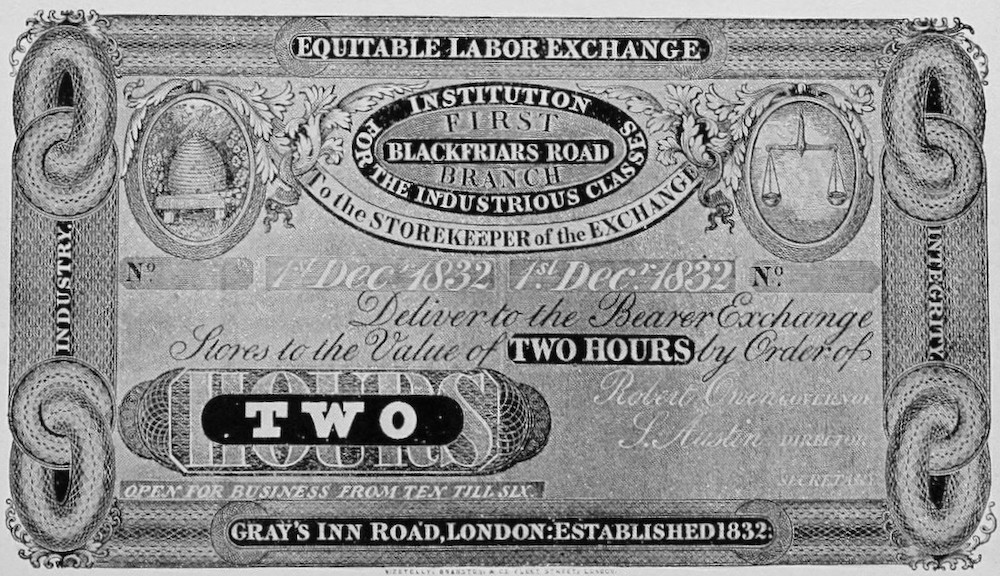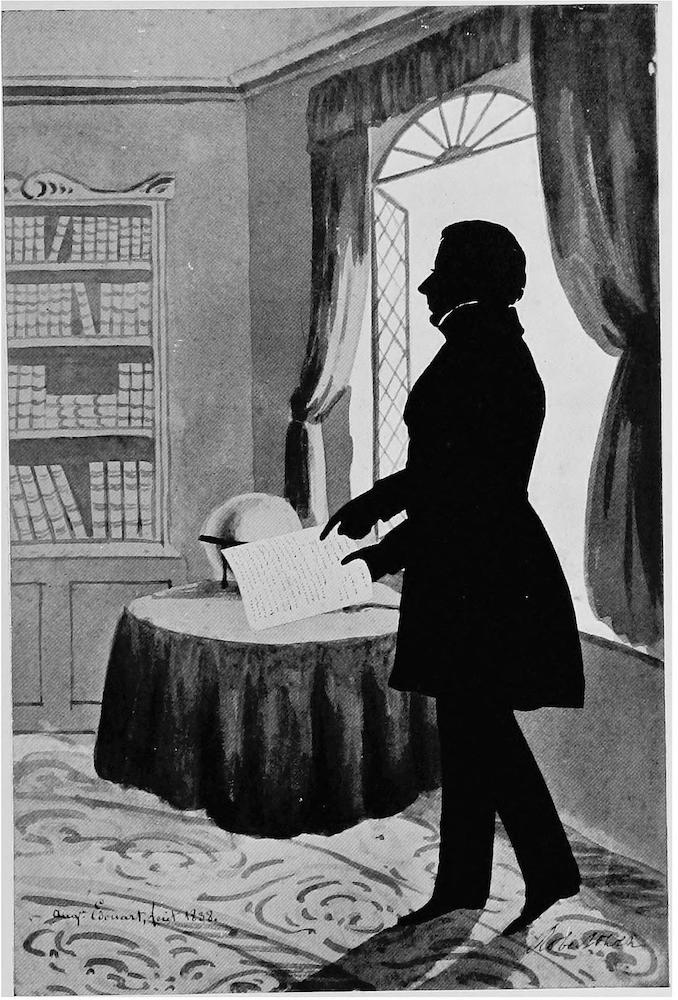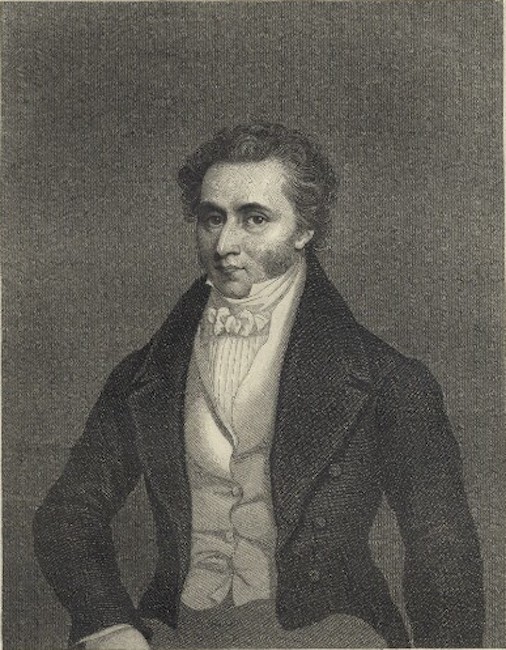
Penelope Harris's subtitle, "[a]n unlikely form of co-operation," is brilliant. First, it reminds us of Robert Owen's reputation as the father of the co-operative movement (1771-1858). But at the same time it prepares us for a surprising collaboration. On the face of it, Owen, a visionary reformer, and Joseph Hansom (1803-1882), a young Catholic architect, had little in common. Owen was an atheist, driven by a lifelong conviction that "communities were the solution to social and economic problems on a global scale" (13). Hansom, roughly half his age, was a Catholic, with his own talent and career to develop. The challenge for Harris is to show how these two men with their different personalities and aims came together; how, in Birmingham and later in Hampshire, Hansom assisted Owen in his bid to ameliorate the lives of the workers; and, of course, how much fruit their efforts bore.
Owen and Hansom first met in Birmingham in the early 1830s. Hansom arrived there by way of the competition to build a new town hall, at a time of burgeoning civic pride. He and his partner Edward Welch (1806-1888) were already well established: they had recently completed important projects like Beaumaris Goal in Anglesey, and the (since demolished) York Dispensary. Their imposing Victorian Terrace in Beaumaris was still in progress. But when the competition for Birmingham Town Hall was announced, Hansom had set his heart on winning it: "he would have it," he said, when he saw the announcement (44). Ambition was certainly driving him at this point. Yet he had had a principled upbringing. He concerned himself with his workmen and their welfare. When he won the competition, arrived in Birmingham, and encountered the charismatic Robert Owen there, he was naturally impressed by the older man's vision of a better way of life in the newly industrialised world.


Left: One of Owen's London "Labour-notes." The same design was used in the Birmingham branch. Source: Podmore, facing p. 418. Right: Robert Owen, 1838. From an unpublised drawing by A. Edouart, by permission of the Charity Organisation Society. Source: Podmore, facing p. 436. [Click on these and the following images to enlarge them.]
For his part, Owen had not long returned from his venture in Indiana, where he had bought an existing settlement and tried to create ideal living and working conditions there, similar to those he had promoted in Scotland at New Lanark. As an enterprise, New Harmony had failed, bankrupting him in the process. He was not to know that it would prove influential in the long run — that his sons would settle permanently in America, and that both they and the town as a whole would make significant contributions to American life. But even without this knowledge, he had lost none of his determination to set up a utopian community, and in the overwrought climate of the radical Midlands town, as in London and elsewhere, he made a gesture towards it by opening one of his "labour exchanges." These allowed working men to use Labour-Notes (that is, notes for hours worked) in lieu of regular currency. The money principle was too entrenched for this to catch on in a big way. However, the Birmingham branch did better than others, lasting from July 1833 until the next summer. It even made a surplus, which in true Owenite spirit was donated to the Birmingham's General Hospital fund (94).

Thomas Attwood, Esq., MP for Birmingham. Stipple engraving, 1832 or after (courtesy of the National Portrait Gallery, London, NPG D20837, kindly made available on the Creative Commons Licence)
After Harris's two opening chapters on Hansom and Owen, Chapter III unravels the complex situation in Birmingham itself. The two men's stories at this point (in 1833) involve not only their individual hopes and ideals, but a time of great civil unrest in this part of England. The cast of characters here is large, so much so that Harris provides mini-biographies of the main figures, and various less familiar ones, in an appendix. This allows the spotlight to fall, as it should, on the two principals. One of the local men stands out though: Thomas Attwood (1765-1856), the rich banker and activist whose mass meetings in support of the Reform Bill had attracted as many as 200,000 people. Reliant on Attwood for funding the Town Hall, Hansom might perhaps have earned the sobriquet of "The Socialist Architect" (51) even without Owen's influence. In fact, Harris tells us, it was Owen who first "latched on" to Hansom and Welch, not the other way around (50-51). At a point when the trade union movement was rising, the two architects were already in the thick of workers' protests, and now Hansom took an active part by arranging meetings and generally adapting Owen's ideas to suit the local situation (53). Harris quotes from a letter of 12 September 1883 sent by Welch to the architect Robert Chantrell in Leeds, explaining:
My partner and myself with his [Owen's] assistance are endeavouring to organise the great working mass of builders in the kingdom as to place them in a permanent position of comfort and happiness — and to destroy the ruinous system of competition among guilds which has reduced them to misery and involved us in almost incessant anxiety and care. [qtd. 51]
Hansom went so far as to plan, and start to build, "a Guild or Brotherhood of Operative Builders" to bring the warring factions together (as noted in the Birmingham Journal of 21 December 1833). So this really was a case of collaboration, not simply of a young architect's conversion to an older man's cause.

Hansom and Welch's Birmingham Town Hall (1832-34). Click on the image to enlarge it and for more information about it.
Bankrupted in 1834 by the expenses of the Town Hall, at least partly as a result of favouring man-power over machinery (see p. 60), and unable to complete his guild project, Hansom moved on with his architectural career and (not without setbacks) recouped his losses. But there was another stage in the two men's working relationship. In her fourth chapter, "New Beginnings — Owen's Millenium," Harris explains how Owen, still single-mindedly set on the same track, approached Hansom again at the beginning of the 1840s to design Harmony Hall in Hampshire. Owen's idea now was to attract the better-heeled among his followers, in the hope that the community thus formed would encourage and fund further expansion. Once again, the scheme floundered. Money ran out, but, as Harris explains in her final chapter ("The Aftermath — where next?") the result was an imposing and commodious building. This, in its reincarnation as Queenwood College, became the seedbed for many of the nineteenth-century's finest scientists.
For Hansom, perhaps the most significant, if indirect, outcome of his encounters with Owen was his founding of the periodical, The Builder in 1842. Harris is surely right to sense the influence of Owen here: the older man loved to circulate his views in print, and was an inveterate pamphleteer. Hansom's all-inclusive sub-title is another clue to Owen's impact on the new project: The Builder was described as "A Journal for the Architect, Engineer, Operative and artist" (57; emphasis added). Today, the archives of The Builder are a rich source of information about architecture, and indeed life in general in the Victorian period. Remarkably, it is still being published, albeit now simply as Building (see Bibliography).
In Robert Owen and the Architect Joseph Hansom Harris makes every effort to guide us through an unusual meeting of minds in the ferment of 1830s Birmingham, and to trace its effects into the 1840s and beyond. She provides a synopsis in the introduction, a timeline, and over forty illustrations. In none of these are the two men depicted together, but we can visualise them from Harris's account, for instance at the "Builders' Parliament" in Manchester in November 1833 (53), or when visiting Harmony Hall "to discuss the heating and ventilation system" (99). Their relationship was clearly cordial. Between them, they left a legacy both in political and social ideals, and in the built environment. Owen's inspiration is widely appreciated now, while Birmingham Town Hall has achieved iconic status, and Hansom's publishing venture was an unalloyed success. This detailed account of the two men, during one of the pivotal phases of their lives, situates them vividly in their contemporary context, and in so doing illuminates them both in an original and memorable way.
Bibliography
[Book under review] Harris, Penelope. Robert Owen and the Architect Joseph Hansom: An Unlikely Form of Co-Operation. Redditch, Worcs.: Brewin, 2020. 152 pp. Illustrated. £14.95. ISBN 978-1-85858-717-2.
"Building magazine in 1843." Building. Web. 24 September 2020.
[Illustration source] Podmore, Frank. Robert Owen, a biography. New Lanark, 1906. Internet Archive, from a copy in the Cornell University Library. Web. 24 September 2020.
Created 24 September 2020